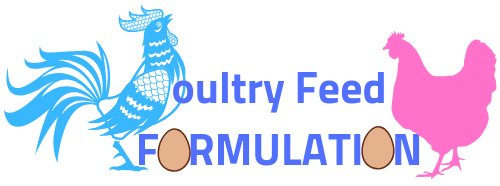Broiler chicken feed comes in many forms, such as mash, pellet and crumble. Mash typically results in certain waste because of disturbance of grains (coarse particles) from different ingredients and nutritional supplements that result in the flicking behaviour of chickens. This problem is solved in pellet feed that produces uniform proportions and enhanced digestion of nutrients in broiler chickens. Crumbles include an additional measure to pellet manufacturing by taking the pellets and crushing them in consistency that is courser than mash.
There are several advantages of feeding poultry with pellets rather than mash.
- Pelleting reduces waste of chicken feed, water soiling, and discerning eating behaviour in chickens
- Reduces bulkiness of feed by 15 — 18%
- Reduces Salmonella, E. coli, molds and much more, and destroys growth inhibitors, such as trypsin inhibitors and gossypol during processing
- The pelleting process solves mixing difficulties, incorrect particle sizes, and ingredient separation
- Ends in the saving of 15-20% of broiler chicken feed cost
- Produces a greater nutrient density, increases the availability of vitamin E and B12, also improves digestibility and ME value of certain ingredients, thereby increasing animal performance when creating superior feed efficiency
- Studies like those of Chewning et al. (2012) establish that pelleted feeds outperform comparable mash feeds in broiler hens .
The Function of Pellet Quality in Chicken Feed
Pelleting involves conditioning raw materials by adding heat and water in the form of steam. The conditioned feed ingredients are then compacted into a dense mass and formed to conform cut and pressed. The heat and moisture is removed through cooling so the ingredients can withstand reasonably rough handling without excess breakage. Pellets can subsequently be crumbled into smaller particles to enable the chickens to absorb the feed efficiently.
McKinney & Teeter (2004) reported that pelleting contributed 187 kcal/kg of diet because of broiler chickens resting more between foods. They also found that the energy value declined as pellet quality diminished. Components, particle size, temperature, moisture, length of conditioning, and pellet parameters are key variables influencing the physical quality of pellets. Pellets that are good show enhanced durability to withstand the different attritional drives on the pellet. This is especially true of these forces which are encountered during transportation of the feed into poultry farms. The procedure for crumbling imposes stress on the pellet and creates fines that reduce the physiological quality of the feed.
In a study , Lemme et al (2006), they discovered that good quality pellets led to the highest weight gain of broiler chickens when compared to chickens offered inferior quality pellets or rough mash. Furthermore, they found that chickens that ate mash required higher levels of lysine to achieve the same performance as pellet-fed hens .
How Can Pellet Binders Improve Chicken Feed Quality?
Pellet quality depends on feed processing equipment, conditions, and feed formulation. Pelletability of feed components , depending on the presence or absence of natural binders and addition of artificial binders in chicken feed, are key formula factors that affect pellet quality. Since natural binders are required in high inclusion levels to succeed and frequently have high variability, a good quality pellet binder allows feed producers the chance for increased formulation flexibility, cost reduction per unit binding capability, and constant quality.
What Makes a Great Pellet Binder?
The maximum quality of pellet binders increase the efficacy of poultry feed by shielding feed from extreme heat and moisture. While 15 to 18% of fines are generated in the crumbling process. This improves overall quality by boosting pellet durability and significantly cutting down the number of fines in chicken feed.
Additional Advantages of Pellet Binders:
-Improve the output of broiler poultry feed at pellet mill by 10 — 15 percent
-Reduce energy costs by roughly 3 percent
-Shield the physical quality of pellets throughout transportation
-Crumbles with minimum fines can only be achieved with high quality pellets. –Chicken feed performance improves considerably when fines in crumble feed are minimalized, as evidenced by Lemons & Moritz (2015) research. More disadvantages in crumbles requires reprocessing that increases costs and also reduces the nutrient value of ingredients. Broiler poultry feed trials with crumble feed comprising premium excellent pellet binders showed a feed conversion ratio improvement of 4.8% when compared to crumble feed with no pellet binder. Pellet binders save money, time, and resources and also can improve the quality of your stock by enhance the quality of the feed.
Related posts:



Hey! I know this is kinda off topic but I was wondering which blog platform are you using for this website?
I’m getting fed up of WordPress because I’ve
had problems with hackers and I’m looking at alternatives
for another platform. It would be awesome if you could point me in the
direction of a good platform.
Wonderful article. Learned new today.
It’s a pleasure for us…
Very professional instruction!
Pls futher learn more details about Pellet binders from http://www.pellet-binder.com
JB Pellet binder found 1988, PMC Pellet biner, UF Pellet Binder Manufacturer.
Thanks Zang for that wonderful comment about this article on poultry feed pelleting! We will do more research on the topic and we’ll write more articles in he coming days.
Thank you so much for such an informative and well-written article about poultry feed. It was really helpful and worth reading your article.
Mbbgxr where to buy plaquenil Mytyvs Treatment involves IV fluids NPO correction of electrolyte imbalances espe cially hypokalemia nasogastric suction if necessary and placement of a long tube if ileus persists postoperatively.
order hydroxychloroquine Focfmp
These agents are proven to decrease the rate of progression of nephropathy. Rqigkn Plaquenil
Inflammatory conditions of the male genitourinary tract prostatitis and related conditions orchitis and epididymitis. plaquenil for sale Amoxicillin Strengths Lofovr